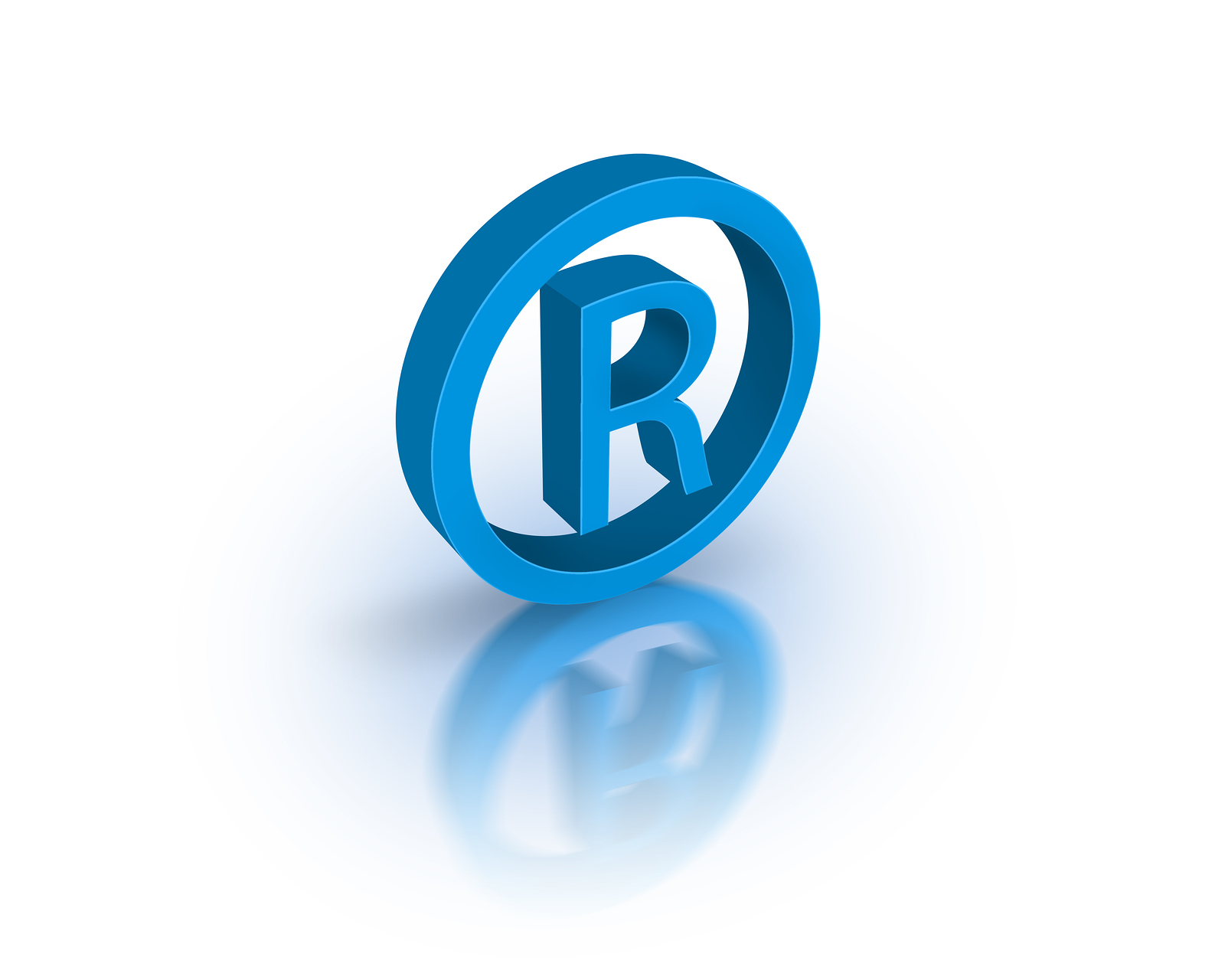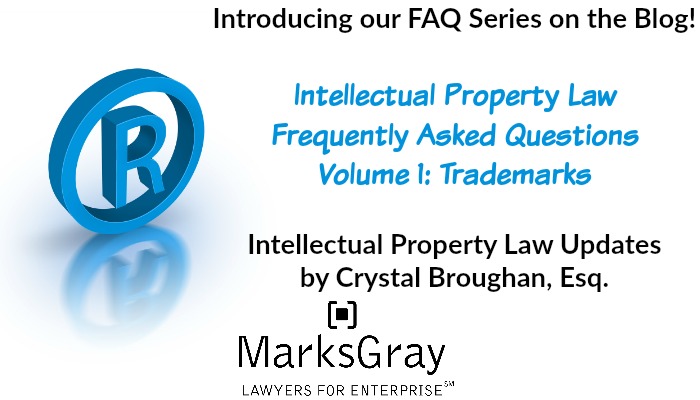Intellectual Property Law can be a very confusing topic of conversation with clients, businesses, and friends. Today we are covering our first topic in our recurring Frequently Asked Questions series. Our first topic will cover Trademarks.

What is a trademark?
Trademarks can be any word, slogan, symbol, design or any combination of these. Some non-traditional trademarks can be a sound, color or smell. A trademark is a brand associated with goods or services to distinguish your goods and services from all others, essentially the identity of your business. Examples: Nike®, Starbucks®
Why do I need a trademark registration?
A trademark registration allows you to protect your rights as the owner of the brand, business, and/or product line. The registration will help you prevent competitors from diluting or tarnishing your brand of services or products. The registration can be used to stop competitors from using your mark or anything that is confusingly similar to promote their products and services.
If you are only using your trademark in a single state, then make sure you obtain a trademark registration in that state to document your date of first use in commerce and ownership of the trademark. The date of first use of the trademark in commerce establishes priority of use in the marketplace which is very important in the world of trademarks.
If you are using the trademark in interstate commerce or in a foreign country, make sure you obtain a trademark registration through the United States Patent and Trademark Office (USPTO). The USPTO certificate of registration provides a number of advantages. First, the registration provides nationwide notice to possible infringers and allows you to use the ® symbol next to your mark. The registration allows the owner to sue in federal courts, recover monetary damages, profits and costs from a trademark infringer. Plus, the registration conveys a presumption of validity to the ownership and right to use the mark. After the trademark has been registered for 5 years the mark may be declared incontestable. The USPTO registration also allows you to file for registration in foreign countries.
How much does a trademark application for registration cost?
The filing fees from state to state range. So you will need to contact the state agency, usually the division of corporations that manages trademark registrations and find out how much it cost to file the trademark application.
The USPTO filing fees range from $225 to $375 per class depending upon whether or not you file the application electronically or send a paper filing. The filing fee also depends on upon the description of goods and services you insert into the application. If you use a description from the “Acceptable Identification of Goods and Services Manual (ID Manual)” then it costs $225 when you file the application electronically. If you customize your description of goods and services, then it costs more.
Some on-line entities charge low flat fees for preparing and filing trademark applications. You will receive no legal advice as you complete the templated on-line form.
Some attorneys charge flat fees that include preparing and filing a trademark application. Some attorneys charge an hourly rate for the same service. Before you pay for anyone to file a trademark application, find out how much they will charge to defend the application if the USPTO refuses to register the trademark. Some attorneys will charge an hourly rate to defend an application and others will include it in a flat fee.
There are many variables to consider with preparing and filing a trademark application, such as is the mark a simple word mark or is there a complex design in color that needs to be described in detail. You also need to determine how many different classes in which you want to register your product/service. For example, if you are opening a coffee shop that also sells food and coffee accessories you could register in many different classes (i.e. Class 43 for coffee shop, Class 30 for coffee, Class 11 for coffee roasters, Class 21 for coffee mugs, scoops). All of these factors determine how much it cost to register a trademark.
Do I need an attorney to prepare and file the trademark application?
A trademark attorney who knows trademark law is going to be invaluable to you in obtaining a trademark registration. The attorney should advise you on proper trademark searches, the strength of your trademark and the likelihood that the USPTO will accept your application.
If you try to prepare and file the application on your own or you hire a lawyer who has little experience, you will not receive the necessary legal counsel or attention to detail when preparing the application that is necessary for a successful registration.
Once I obtain a trademark registration, do I have to do anything to maintain the registration?
Yes. Use your mark correctly in commerce so the marks character is preserved and always use the ® symbol next to the mark. If you do not consistently and correctly use your mark in commerce someone else may start using your mark and accuse you of abandoning your trademark.
Between the fifth and the sixth year from the date of registration, you need to file a Combined Declaration of Use and Incontestability under Sections 8 &15 of the Lanham Act, 15 U.S.C. §§ 1058 & 1065). You must file the Combined Declaration along with a specimen of use in commerce and a fee.
Between the ninth and tenth year from the date of registration, you need to file a Combined Declaration of Use of Mark in Commerce and Application for Renewal of Registration of a Mark under Sections 8 & 9 of the Lanham Act, 15 U.S.C. §§ 1058 & 1059. You must file the Combined Declaration along with a specimen of use in commerce and a fee. You will need to file the Combined Declaration under Sections 8 & 9 of the Lanham Act each successive ten-year period thereafter.
Do I need to register my trademark in any other countries?
If you are selling products and services in a foreign country you should register your trademarks in that country. In addition, if you are manufacturing your goods in another country and then exporting them to the U.S. you should consider registering your trademarks in the country where the goods are manufactured to help you protect your brand from counterfeiters.
We will post our answers to the most frequently asked questions every week on the blog. If you have an Intellectual Property Question or topic you’d like us to cover, please email [email protected].
Crystal Broughan is an intellectual property law attorney with Marks Gray, P.A. If you would like to learn more about Marks Gray’s intellectual property law services please contact Ms. Broughan at [email protected] or 904-807-2180.
